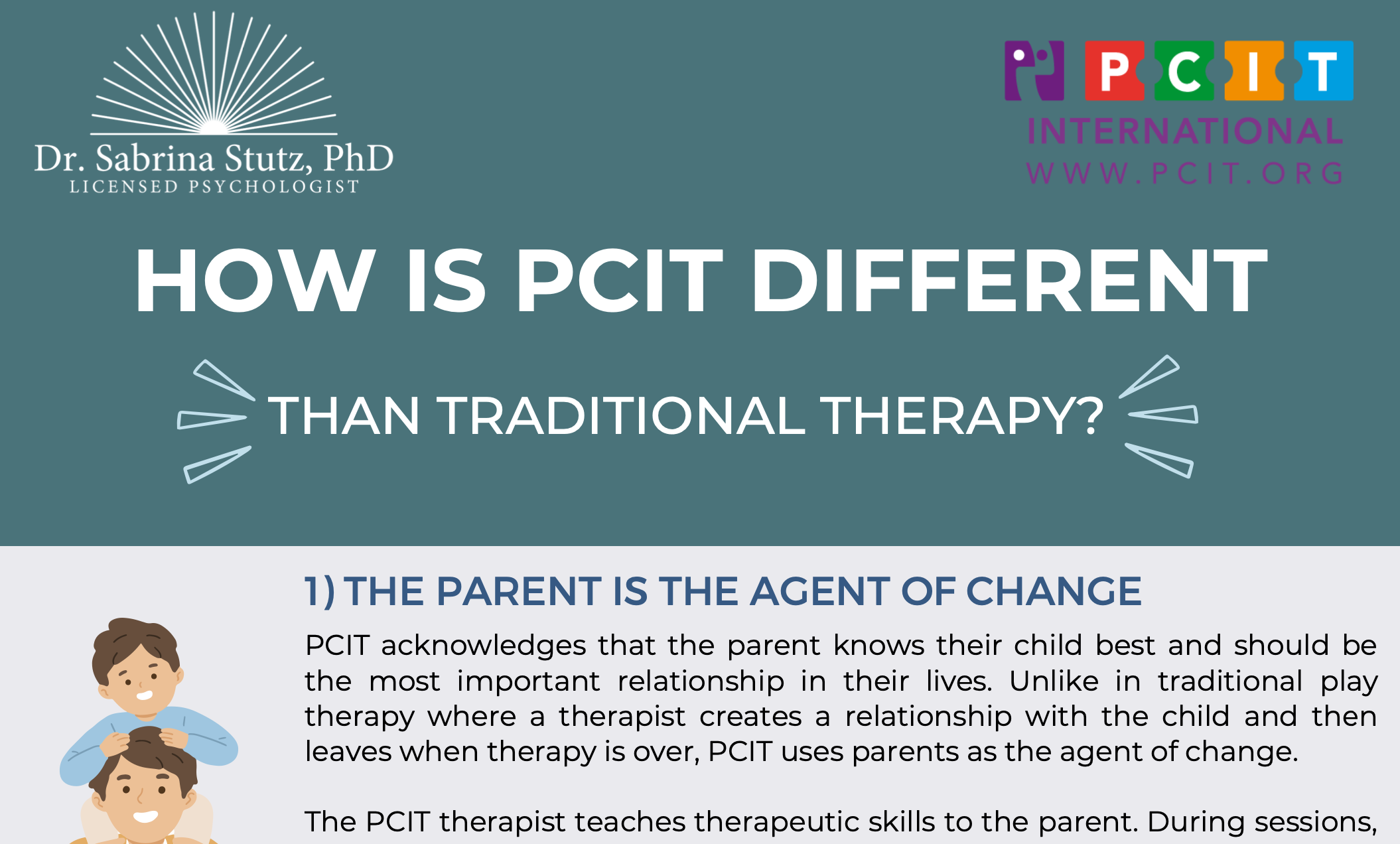What is PCIT Therapy? A Parent’s Guide to How PCIT Works
If you’re wondering what PCIT is or how PCIT therapy works, you’re in the right place. Parent-Child Interaction Therapy (PCIT) is a highly effective, evidence-based treatment designed to improve behavior and strengthen the parent-child relationship. Developed for young children with emotional and behavioral challenges, PCIT combines live parent coaching with proven strategies to promote better communication, cooperation, and confidence at home. In this guide, we’ll walk you through exactly how PCIT works, what to expect during sessions, and how it helps families thrive.
What is Parent Child Interaction Therapy?
PCIT stands for Parent Child Interaction Therapy. PCIT was developed in the 1970s by psychologist Sheila Eyberg. It was originally designed to treat moderate to severe behavior problems in children 2 to 7 years old. Since then, researchers have supported and expanded the PCIT model. Now, PCIT adaptations are available for ages 0-11 and different mental health needs:
PCIT-CALM for anxiety
Theoretical Foundations of PCIT Therapy
PCIT therapy was developed by combining attachment theory and social learning theory.
Attachment Theory shows that warm, responsive, and consistent parenting helps children thrive. In all types of PCIT, parents get help building a secure bond using clear and simple skills. PCIT therapists coach you how to apply those skills during challenging child behaviors.
Social Learning Theory explains how children learn behaviors through watching and experiencing others. Each version of PCIT involves coaching parents to model appropriate emotion regulation. Parents learn how to offer consistent expectations and limit-setting while teaching age-appropriate cooperation. Most importantly, PCIT celebrates progress towards learning for both parents and kids.
How Does PCIT Work?
Most PCIT therapy tends to follow a similar pathway. In this section, you'll learn step-by-step what the PCIT process looks like from start to finish. Check out our recent blog post to learn more about what virtual PCIT therapy looks like from your own home. Or learn more about what to look for when choosing a PCIT therapist here.
1. Getting Started In PCIT Therapy
PCIT Clinical Intake
PCIT begins the way most therapies do, with a comprehensive clinical intake. Your therapist will ask about your child's development history. They'll check in about current challenges and any methods you have already tried. You'll also receive rating forms to complete about your child’s symptoms.
Pre-Treatment Play Observation
One of my favorite features of PCIT is the baseline play observation. In it, the PCIT therapist observes you and your child playing together in a room by yourselves. The therapist watches via video or two-way mirror, from a separate room. Periodically, you’ll be coached to change the way you play. That way, the therapist can see how your child responds to different scenarios. Each caregiver who is participating in PCIT will be asked to play with the child one-on-one. while the therapist observes and codes the interactions. Coding is how your therapist collects baseline data and tracks change over time. It also helps your therapist see how symptoms show up in real time, and tailor the treatment to your family’s needs.
If you’re doing virtual PCIT, you'll also learn to set up your own PCIT space. Your therapist will guide you in preparing your home and selecting appropriate toys. The therapist’s camera will be turned off during the play observation so they don't distract.
2. Child-Directed Interaction (CDI)
The first phase of PCIT is Child-Directed Interaction (CDI). CDI focuses on teaching parents to follow their children's lead. You'll learn how to use a set of positive parenting skills consistently. And you'll have coaching on how to use them even in the face of a child’s most challenging behaviors or symptoms. These are the similar skills play therapists use to connect with children. And you will learn to offer them to your child every day during "Special Time."
CDI-Teach (Parents-Only Session)
During this session, you will learn all the CDI positive parenting skills used in PCIT. Your therapist will work with you to tailor your PCIT program to your family’s values and customs. They will provide examples addressing your child’s specific needs. You may also role-play how to use the skills during challenging moments. Your homework will be practicing CDI skills for 5 to 10 minutes per day with your child at home. Many families call this daily play session, "Special Time." Throughout this phase, you'll keep track of how "Special Time" is going at home to talk about in the next session.
CDI-Coach (Live Parent Coaching)
Here is where the magic begins! For the next several sessions, you'll play with your child while wearing headphones. Your PCIT therapist spends the first 5 minutes collecting data on your skills use. Then, they'll review your progress and talk about coaching goals for the session. While you play with your child, you'll get immediate coaching feedback and suggestions. You'll try new ways of responding to problems, and receive live guidance and support. During CDI coaching, parents typically notice:
Reduced parent stress
Improvements in child self-esteem
Better child attention, language, and social skills
Reductions in child behavioral problems,
Increased sense of secure-attachment between parent and child
Your PCIT therapist will show you charts of your progress over time. They'll review weekly goals so you know exactly what to focus on during your home practice. No more guessing on whether you're "doing it right." One of the most beneficial parts of PCIT is being able to see concrete data on how far you’ve come each and every session.
CDI Graduation
You’ll "graduate" the CDI phase once you reach research-backed skill benchmarks that predict long-term success, even after therapy ends.
3. Parent-Directed Interaction (PDI) or Other Adaptation Modules
The next phase(s) of PCIT depends on your child’s symptoms, progress, and your goals. Some families complete CDI and feel confident with the results. They may decide to end therapy there. In my practice, I use a data-driven review of progress and combine it with your family’s remaining goals to recommend next steps. Most families benefit from additional targeted phases, such as:
If Child Behavior Problems Persist: Parent-Directed Interaction (PDI)
Parent Directed Interaction (PDI) is the second phase of classic or standard PCIT. It has the most research support for improving behavior problems in children. In this phase, you will learn how to give effective instructions that help your child cooperate. You will be coached on timely limit-setting and appropriate consequences while playing. Several PCIT adaptations offer a PDI-like phase as well. PCIT-Toddlers and PCIT-Older Child both use different developmentally appropriate cooperation-boosting methods. Throughout PDI, you will apply these skills in increasingly complex real-life situations. For example, your therapist may coach you during meals, on a public outing, or with siblings. That way, you develop confidence in applying Parent Child Interaction Therapy skills during your child's real-life challenges.
PDI Graduation: You “graduate PDI” when you demonstrate skills benchmarks. These include giving effective directions and consistent responses to non-cooperation.
If Child Anxiety Concerns Remain: PCIT-CALM and the DADS Sequence
If anxiety is a remaining concern, PCIT-CALM offers a phase called the DADS sequence. First, you'll work with your therapist to build a "fear ladder." Together, you'll identify factors surrounding your child's anxiety. Then you'll rate them based on how challenging they are for your child. Your therapist will teach you about gradual exposure and how it works to reduce anxiety. You will learn how to support your child in practicing “brave” behaviors. You'll apply techniques to gradually increase the difficulty, and help your child face those fears.
If Child Depression or Emotional Problems Remain: PCIT-ED and Emotional Coaching
Some kids continue to present with guilt, irritability, and sadness after CDI and PDI. If your child has remaining emotional concerns, PCIT-ED offers a phase called Emotional Development (ED). In it, parents are coached how to increase their child’s emotional expression and regulation. In my practice, we may also add other evidence-based techniques from Cognitive Behavior Therapy (CBT), Acceptance and Commitment Therapy (ACT), or Dialectical Behavior Therapy (DBT).
4. Graduating PCIT Therapy
Graduating PCIT happens when your child's behaviors and your skills have improved. First, you'll need to demonstrate proficiency in all phases of skill coaching. Then, we'll look to make sure your child's symptoms have resolved and are developmentally appropriate. Last, we want you to feel comfortable and confident managing your child's behaviors in your day-to-day life. Families typically meet these goals within 12 to 20 PCIT therapy sessions.
PCIT Therapy Post-Graduation Options
End Therapy. After graduation, many families feel satisfied with the skills they've learned. They may choose to continue on in life without any need for further therapy.
Attend Booster Sessions, As Needed. Optional booster sessions are available one month after PCIT graduation. These sessions help reinforce your skills and offer opportunities to ask questions. Booster sessions address any re-emerging or new concerns that may arise in the future.
Return to or Begin Other Needed Therapies. For children with more complex needs, PCIT may have been a planned pre-requisite before other therapy. PCIT helps kids learn the emotion regulation and cooperation needed to benefit from some other therapies. Examples might include feeding therapy, toilet training, speech therapy, or trauma processing.
Next Steps: Exploring PCIT for Your Child
PCIT is more than just therapy—it’s a parenting transformation. With the right tools, you can reduce stress, build a stronger connection, and feel confident navigating even the toughest parenting moments. The gift you give your child by investing time and effort into PCIT now, can change their trajectory in the long-term. Read more about common child symptoms that might benefit from PCIT.
Begin PCIT Therapy Online From Home in California or Any PSYPACT State
If you’re looking for therapy in California or any of the 40+ PSYPACT States, parent child counseling is available to you! As long as you have a device with a camera (e.g., phone, laptop, tablet), a pair of headphones, and internet access, you can start Parent Child Interaction Therapy (PCIT) with an online child psychologist, right from your own home. Here’s how to get started.
Step 1
First, you’ll complete my consultation request form. It has up-to-date information about my California-based counseling practice, policies, availability, and wait times.
Step 2
15-Minute Phone Consultation
We’ll schedule a complimentary brief phone call where we learn more about one another and decide if we’re a good match.
Step 3
Begin Virtual PCIT
You’ll get set up in the client portal and book your first session! Together, we’ll walk the journey of restoring harmony in your home.
Share How PCIT Therapy Works by Downloading Our Handout:
Learn more about differences between PCIT and traditional therapy
Share PCIT knowledge with your friends and family
Educate your teachers or healthcare providers about PCIT
Give this to your patients or students when making a PCIT referral
Other Parent Child Therapy Options in CA, NC & PSYPACT States
I'm passionate about bringing you the most effective evidence-based child therapy techniques available. I offer help for toddler tantrums, parent coaching, and evidence-based online therapy like CBT & ACT. So no matter where you are in your parenting journey, I'm there to help manage challenges together across your child’s development. And whether you’re looking for a child therapist in California or any PSYPACT state, I’m able to provide coast to coast therapy access. My other specialty areas include chronic illness therapy and diabetes therapy. If you have questions or want to connect, feel free to drop me a line. I look forward to hearing from you!




